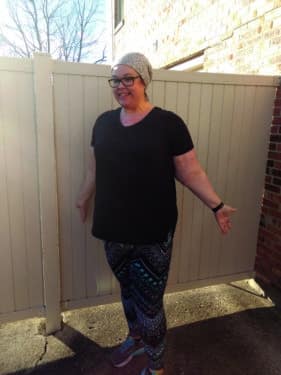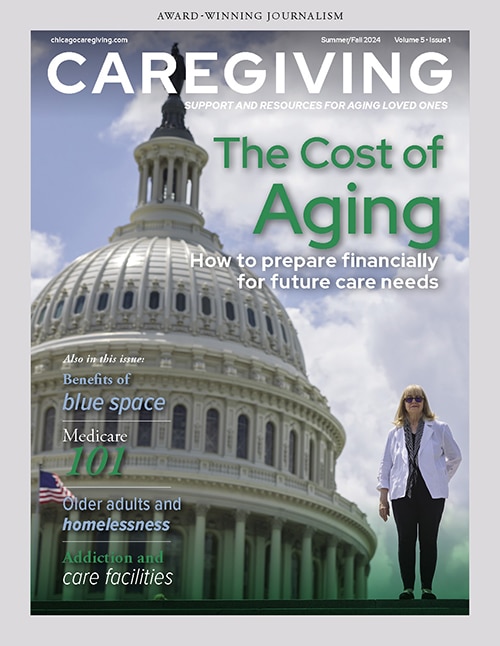Type 2 diabetes can wreak havoc before you know it
Allison Dickson hoped the feeling would pass.
As an on-the-go mother of two juggling a regular job and a burgeoning career as an author, 38-year-old Dickson didn’t have time to be sick. Life was calling and, by her own admission, she sent her health to voicemail.
“I knew something was up. I ignored it,” Dickson confides.
Dickson was tipping the scales at 400 pounds and eating anything she wanted. A family history of type 2 diabetes followed her around like a teething puppy, gnawing away at her wellness bit by bit. After months of feeling sluggish, Dickson reluctantly made an appointment to see her doctor.
The news was as expected: type 2 diabetes. She’d just joined the millions of Americans who live with one of the most challenging diseases of modern times.
The diabetes epidemic
According to the Centers for Disease Control and Prevention (CDC), an estimated 30.3 million people in the United States have diabetes, yet only 23.1 million are diagnosed.
Those 30.3 million individuals represent over 9 percent of the country’s population. It’s also roughly the combined population of New York City, Los Angeles, Chicago, Houston, Phoenix, Philadelphia, San Antonio, San Diego, Dallas, San Jose, Austin, Jacksonville, San Francisco, Columbus and Indianapolis.
Millions of people will face life-threatening complications such as kidney damage, heart disease, stroke, loss of vision and loss of limbs thanks to the beast that is type 2 diabetes. The disease interferes with the body’s ability to transform sugar into energy, overloading the body and bringing with it a host of health complications.
The epidemic’s financial weight on the economy is staggering. The American Diabetes Association estimates the costs for lost work, wages and medical costs for those living with diabetes at $245 billion per year.
While those costs might seem heavy, people living with type 2 diabetes carry the true weight. According to the Obesity Society, roughly 90 percent of those with type 2 diabetes are overweight or obese.
Diets heavy in processed foods (read: high in sugar, low in nutritional value) coupled with sedentary lifestyles mean that as weight goes up, overall health goes down. It’s an incessant cycle, especially affecting those with lower household incomes seeking to stretch their food dollars.
Low income. Low activity. Little time. Fast, processed foods. Weight creeps up. Insulin resistance increases. The body can no longer process the sugar in foods. The risk of developing diabetes becomes greatly increased.
“The diabetes and obesity epidemics are the most pressing medical issues of our times,” says Brian Layden, MD, PhD, associate professor of medicine and division chief of endocrinology, diabetes and metabolism at UI Health in Chicago. About half of adult patients admitted to the University of Illinois Hospital have diabetes, he says.
Dinah Ahomka-Lindsay, MD, a family physician with Loyola Medicine, has also seen diabetes cases consistently on the rise in her practice over the past 20 years, with no signs of slowing.
Diabetes can be a stealthy disease, which prevents or delays treatment. While Dickson had physical warning signs and a family history to compel her to see a doctor, Layden says that many patients are in the dark about their risk of diabetes.
“When diagnosed, an overwhelming number of people don’t even feel bad,” Layden says. Rather, they show up at a clinic or emergency room with another pressing medical need, such as an infection, blurry version or dehydration, and a diabetes diagnosis turns out to be the unexpected cause.
Adds Ahomka-Lindsay, “A lot of patients wait until they have complications from the disease like regular headaches or blurred vision before arriving at the ER.”
Getting a clear answer isn’t always welcome, though. A diabetes diagnosis can be a crushing blow, and depression is two to four times more common in those with the disease. The connection is so strong that researchers are exploring a possible genetic link between type 2 diabetes and depression.
For Dickson, however, her diagnosis had the opposite effect: motivation. “When I got my diagnosis, I wasn’t as scared as I thought I would be,” she says. “Instead, it gave me focus.”
Countering diabetes
Dickson was immediately put on medication to manage her diabetes. Her physician arranged for a free glucose meter and led the conversation with regular checkups and advice on nutrition and exercise.
Dickson now shops the perimeter of the grocery store, with fresh fruits, vegetables and lean meats filling the cart space where packaged foods and sugary drinks once sat. She lost 105 pounds in a year and has added regular exercise to her daily routine. Her blood sugar and resting heart rate are all down to levels that make her physician marvel.
With physician supervision, it’s possible for patients to lessen the impact of type 2 diabetes. Both physical activity and smarter food choices can lead to weight loss, decreasing the overall burden on the body and the work it’s asked to do each day. Exercise and diet can also help get blood sugar levels under control, decreasing the need for additional insulin shots and helping patients lower dosages of diabetes-related medications.


As weight goes down, patients generally see a decline in the negative symptoms of diabetes, such as fatigue, frequent urination, high levels of thirst, blurry vision and tingling in the limbs.
Dickson set out with purpose, knowing that losing weight and eating better held the key to feeling good.
What came easy for Dickson, however, remains a challenge for many others. “It’s easy to tell a patient, ‘I want you to eat more fresh vegetables,’ but it’s much harder for them to do when they have to work two jobs to put food on the table,” Layden says.
Disparities in outcomes for those with type 2 diabetes are largely due to disparities in income and access to care, leaving physicians challenged when it comes to helping all patients live better with their diabetes diagnosis.
“I’d like to see the standard of care be affordable for all patients,” Layden says. “Affordable medications can be a challenge, and newer, more promising medications just aren’t financially accessible for the underinsured.”
On the horizon
For each day Dickson continues with her new lifestyle, Layden and Ahomka-Lindsay spend another toiling over how to provide the best care for their patients in a world filled with processed foods, sugar and sedentary jobs.
For Layden, education and outreach are key. “We need to help people make better choices,” he says. “That comes from better social health programs, a commitment to patient and public education about diabetes and advocating for healthier cities on every level, which means bringing care to the areas it hits the hardest.”
And access is key. The easier it is to get adequate medical insurance, the easier it is to see a physician and the easier it will be to get the medications and monitoring so critical to knocking the diabetes epidemic down to size.











